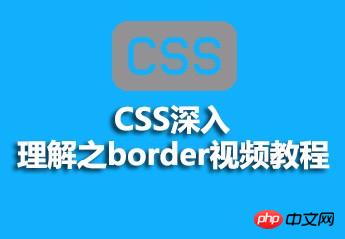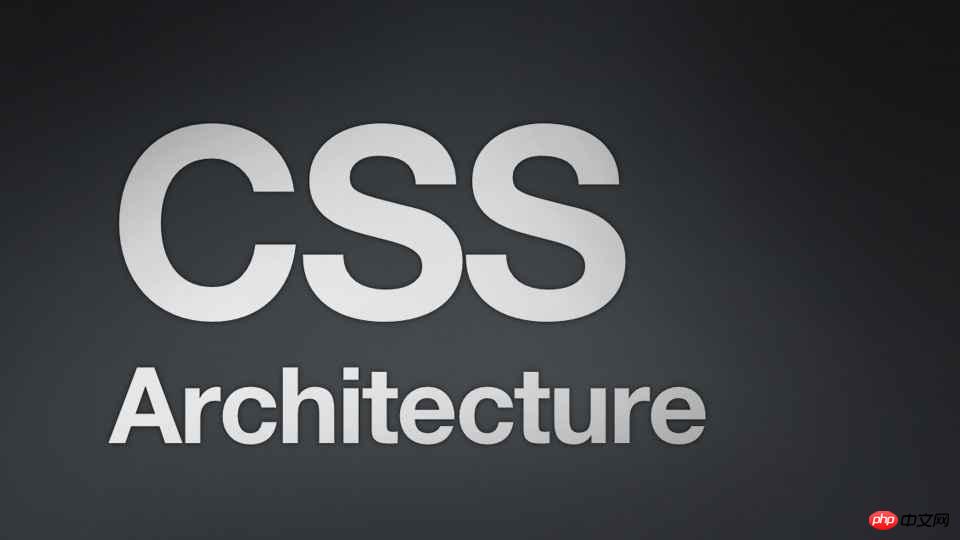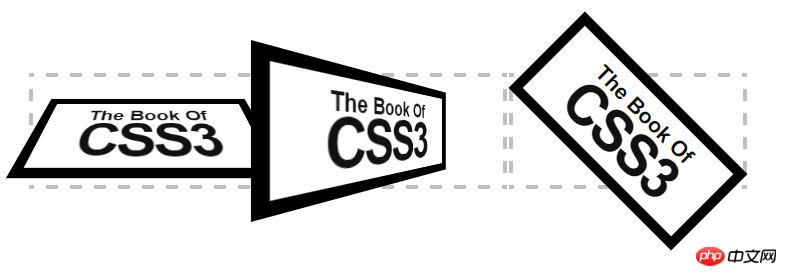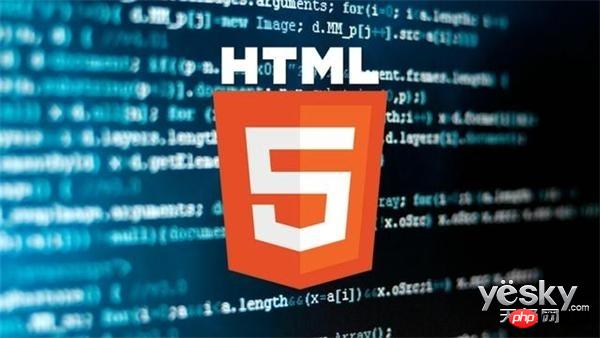Summarize the methods of achieving various effects with css borders
In css, you can change the style and color of the border through styles. Here are a few ways to change the border:
1.CSS in-depth understanding of the border video tutorial
"CSS In-depth Understanding of Border Video Tutorial" will explain in depth the border attribute in CSS, the relationship between border-color, border and background positioning, border and transparent borders, and teach you how to use Border is used for graphic construction, and how to complete our layout using limited tags with the help of border.
Study "CSS In-depth Understanding of Border Video Tutorial" and you will understand the border-width attribute; In-depth understanding of various border-style types; The wonderful use of border in certain background positioning requirements; Construction of graphics such as borders and triangles; border and transparent border; How to complete our layout using limited tags with the help of border.

This article mainly introduces to you Related information about using CSS3 pseudo-elements to realize gradually glowing square borders. The article gives detailed sample codes for everyone to refer to and learn. It has certain reference and learning value for everyone. Friends who need it can take a look below.
This article introduces a code that uses pseudo elements to realize the gradual glow of the border, mainly using the two attributes of scale and opacity.

Rounded corners: border- radius: pixels/percentage
A value sets the horizontal and vertical radius of the four corners of the box. Each corner can be set independently. The order of values is upper left, upper right, lower right, lower left, and clockwise settings can be abbreviated. The logic is the same as padding and margin. The units support pixels and percentages (referring to width and height)
You can use horizontal radius/vertical radius to control the radius separately, and each radius can be controlled independently

4.How to control the CSS border length sample code sharing
CSS border length control
CSS border length control. In the past, when the border length needed to be smaller than the container, I used p nesting. Later, I found that pseudo-classes are very convenient to achieve this effect. Only one p is enough. In addition, adjusting padding and margin is not very troublesome.
5.Detailed explanation of examples of implementing rounded rectangles in HTML
This article mainly introduces in detail how to easily implement rounded rectangles in HTML and tells you how to achieve it through p+css and positioning to achieve rounded rectangle? Interested friends can refer to the
question: How to realize a rounded rectangle through p+css and positioning?

The above is the detailed content of Summarize the methods of achieving various effects with css borders. For more information, please follow other related articles on the PHP Chinese website!

Hot AI Tools

Undresser.AI Undress
AI-powered app for creating realistic nude photos

AI Clothes Remover
Online AI tool for removing clothes from photos.

Undress AI Tool
Undress images for free

Clothoff.io
AI clothes remover

Video Face Swap
Swap faces in any video effortlessly with our completely free AI face swap tool!

Hot Article

Hot Tools

Notepad++7.3.1
Easy-to-use and free code editor

SublimeText3 Chinese version
Chinese version, very easy to use

Zend Studio 13.0.1
Powerful PHP integrated development environment

Dreamweaver CS6
Visual web development tools

SublimeText3 Mac version
God-level code editing software (SublimeText3)

Hot Topics
 How to use bootstrap in vue
Apr 07, 2025 pm 11:33 PM
How to use bootstrap in vue
Apr 07, 2025 pm 11:33 PM
Using Bootstrap in Vue.js is divided into five steps: Install Bootstrap. Import Bootstrap in main.js. Use the Bootstrap component directly in the template. Optional: Custom style. Optional: Use plug-ins.
 The Roles of HTML, CSS, and JavaScript: Core Responsibilities
Apr 08, 2025 pm 07:05 PM
The Roles of HTML, CSS, and JavaScript: Core Responsibilities
Apr 08, 2025 pm 07:05 PM
HTML defines the web structure, CSS is responsible for style and layout, and JavaScript gives dynamic interaction. The three perform their duties in web development and jointly build a colorful website.
 Understanding HTML, CSS, and JavaScript: A Beginner's Guide
Apr 12, 2025 am 12:02 AM
Understanding HTML, CSS, and JavaScript: A Beginner's Guide
Apr 12, 2025 am 12:02 AM
WebdevelopmentreliesonHTML,CSS,andJavaScript:1)HTMLstructurescontent,2)CSSstylesit,and3)JavaScriptaddsinteractivity,formingthebasisofmodernwebexperiences.
 How to set up the framework for bootstrap
Apr 07, 2025 pm 03:27 PM
How to set up the framework for bootstrap
Apr 07, 2025 pm 03:27 PM
To set up the Bootstrap framework, you need to follow these steps: 1. Reference the Bootstrap file via CDN; 2. Download and host the file on your own server; 3. Include the Bootstrap file in HTML; 4. Compile Sass/Less as needed; 5. Import a custom file (optional). Once setup is complete, you can use Bootstrap's grid systems, components, and styles to create responsive websites and applications.
 How to write split lines on bootstrap
Apr 07, 2025 pm 03:12 PM
How to write split lines on bootstrap
Apr 07, 2025 pm 03:12 PM
There are two ways to create a Bootstrap split line: using the tag, which creates a horizontal split line. Use the CSS border property to create custom style split lines.
 How to insert pictures on bootstrap
Apr 07, 2025 pm 03:30 PM
How to insert pictures on bootstrap
Apr 07, 2025 pm 03:30 PM
There are several ways to insert images in Bootstrap: insert images directly, using the HTML img tag. With the Bootstrap image component, you can provide responsive images and more styles. Set the image size, use the img-fluid class to make the image adaptable. Set the border, using the img-bordered class. Set the rounded corners and use the img-rounded class. Set the shadow, use the shadow class. Resize and position the image, using CSS style. Using the background image, use the background-image CSS property.
 How to use bootstrap button
Apr 07, 2025 pm 03:09 PM
How to use bootstrap button
Apr 07, 2025 pm 03:09 PM
How to use the Bootstrap button? Introduce Bootstrap CSS to create button elements and add Bootstrap button class to add button text
 How to resize bootstrap
Apr 07, 2025 pm 03:18 PM
How to resize bootstrap
Apr 07, 2025 pm 03:18 PM
To adjust the size of elements in Bootstrap, you can use the dimension class, which includes: adjusting width: .col-, .w-, .mw-adjust height: .h-, .min-h-, .max-h-






